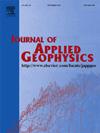Application of gravity gradient measurement in the detection of urban underground space
IF 2.2
3区 地球科学
Q2 GEOSCIENCES, MULTIDISCIPLINARY
引用次数: 0
Abstract
With the continuous progress of urbanization, the safe development and utilization of urban underground space becomes increasingly important. Microgravity measurement technology (including gravity and gravity gradient) has gained widespread use in urban underground space exploration, such as urban ground crack detection and underground cavity detection, due to its advantages of high efficiency, low cost, and broad application. This study describes the composition and working principle of the self-developed quantum gravity gradiometer of Zhejiang University of Technology and analyzes the gravity and gravity gradient anomaly characteristics of subsurface anomalies at different depths through model simulations. The results show that gravity gradient anomalies are more effectively identified than gravity anomalies within a certain depth range at shallow depths. Additionally, this study analyzes the recognition capabilities for anomaly radius, burial depth, and surrounding rock density differences when the gravity gradient accuracy is 1E, providing valuable reference and guidance for practical applications for quantum gravity gradiometer in urban underground space detection. Finally, field measurement data are used to validate the effectiveness, advantages, and challenges of gravity gradient measurement technology in urban underground space detection. This results indicate that gravity gradient measurement technology holds significant potential for urban underground space detection, offering more accurate and reliable data to support the development and utilization of urban underground spaces.
求助全文
约1分钟内获得全文
求助全文
来源期刊

Journal of Applied Geophysics
地学-地球科学综合
CiteScore
3.60
自引率
10.00%
发文量
274
审稿时长
4 months
期刊介绍:
The Journal of Applied Geophysics with its key objective of responding to pertinent and timely needs, places particular emphasis on methodological developments and innovative applications of geophysical techniques for addressing environmental, engineering, and hydrological problems. Related topical research in exploration geophysics and in soil and rock physics is also covered by the Journal of Applied Geophysics.
 求助内容:
求助内容: 应助结果提醒方式:
应助结果提醒方式:


